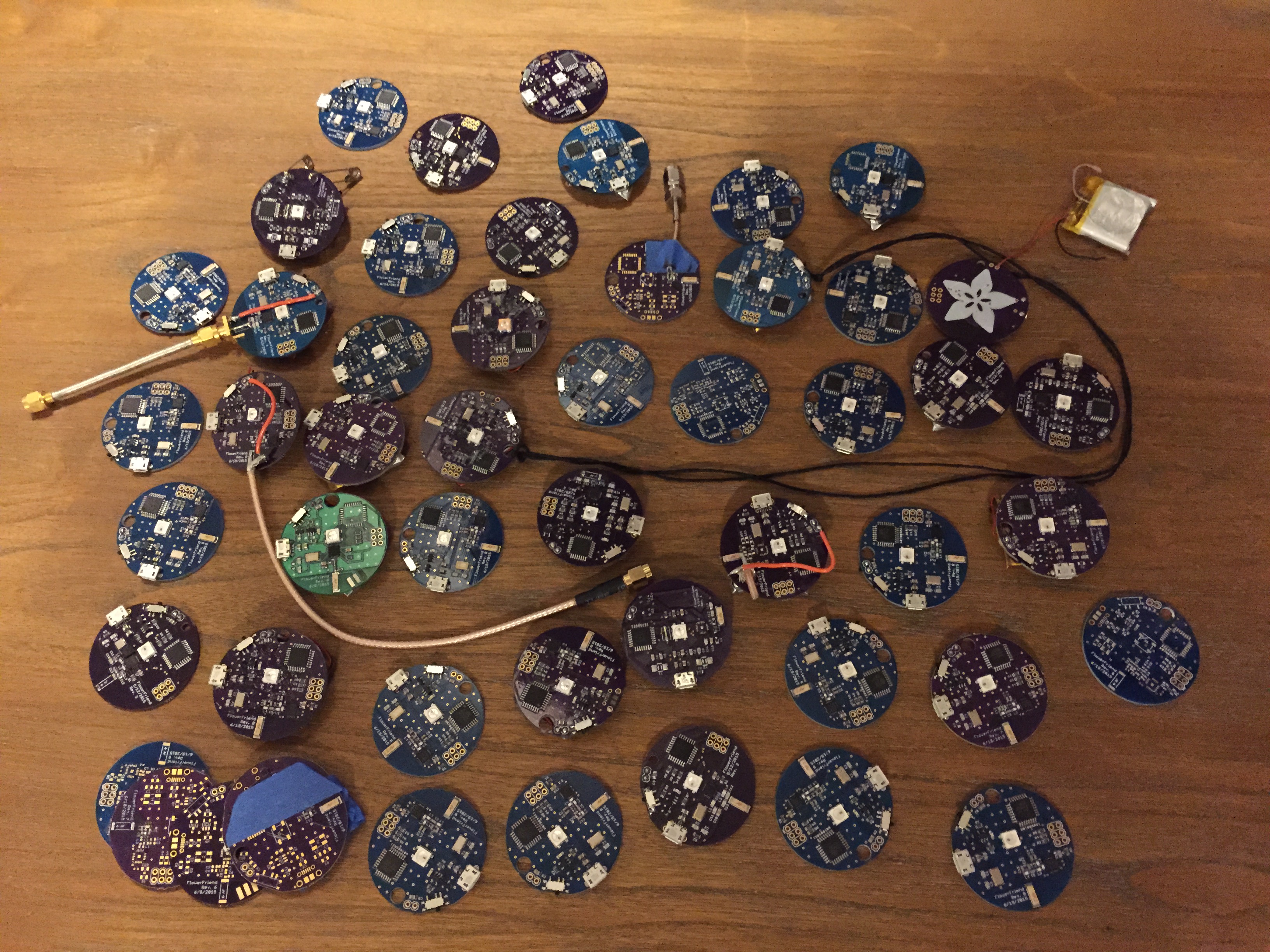Circuit Design
Introduction
After some initial prototyping on breadboards with some simple Arduino code, the project quickly
became focused on designing and testing custom circuit boards (OSH Park, PCBCart), then figuring
out how to manufacture them efficiently and inexpensively. The main challenges were tuning the
matching network of the NRF24L01+ to maximize range, and consistently hand-assembling the many
0603 sized components and NRF24L01+, which comes in a QFN (pinless) package. It is nearly
impossible to use an iron to solder a QFN package without damaging it. Instead, I used the solder
paste and stencil (OSH Stencils, Stencils Unlimited) method with baking in a toaster over (Reflowster).
Design Overview
Every flower must have the ability to do calculations, transmit and receive RF signals, power a
color-changing LED, and recharge its battery over USB. To perform these functions, every flower
has these components:
- Atmel ATmega328P 8-bit microcontroller
- Nordic NRF24L01+ 2.4GHZ transceiver
- WS2812B "NeoPixel" SMD5050 RGB LED
- TI LM3480 3.3V Voltage Regulator
- MicroChip MCP73831 LiPo Charger
- Generic 400 mAh Lithium Polymer Battery
I went with the ATmega328P, NRF24L01+, and WS2812B because they are really common, are well supported with software and documentation, and I was already familar with them.
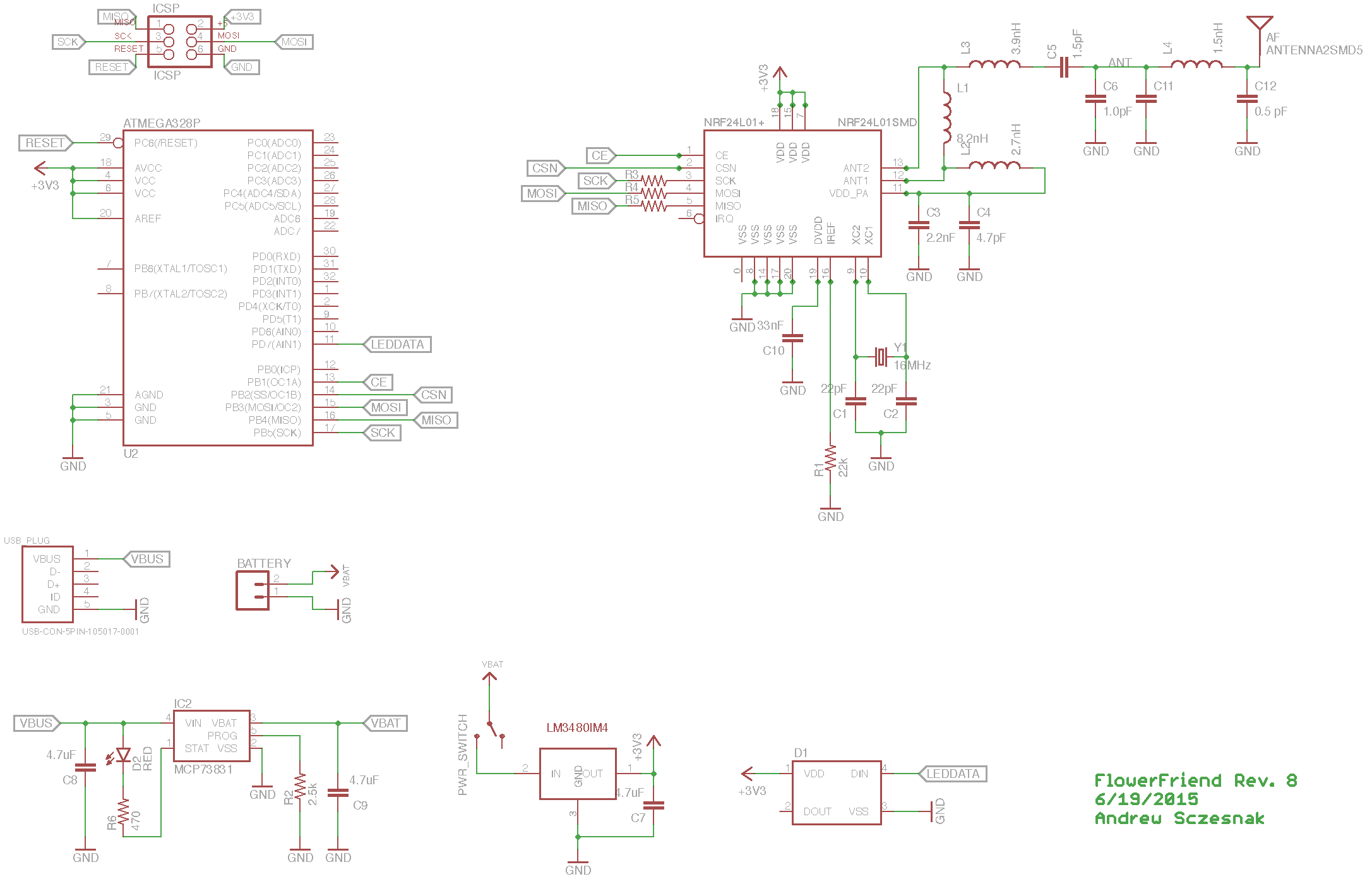
The boards were layed out into an approximately 4 cm circle in order to exactly fit a square 400 mAh battery on the back, and a glued-on fabric flower on the front.
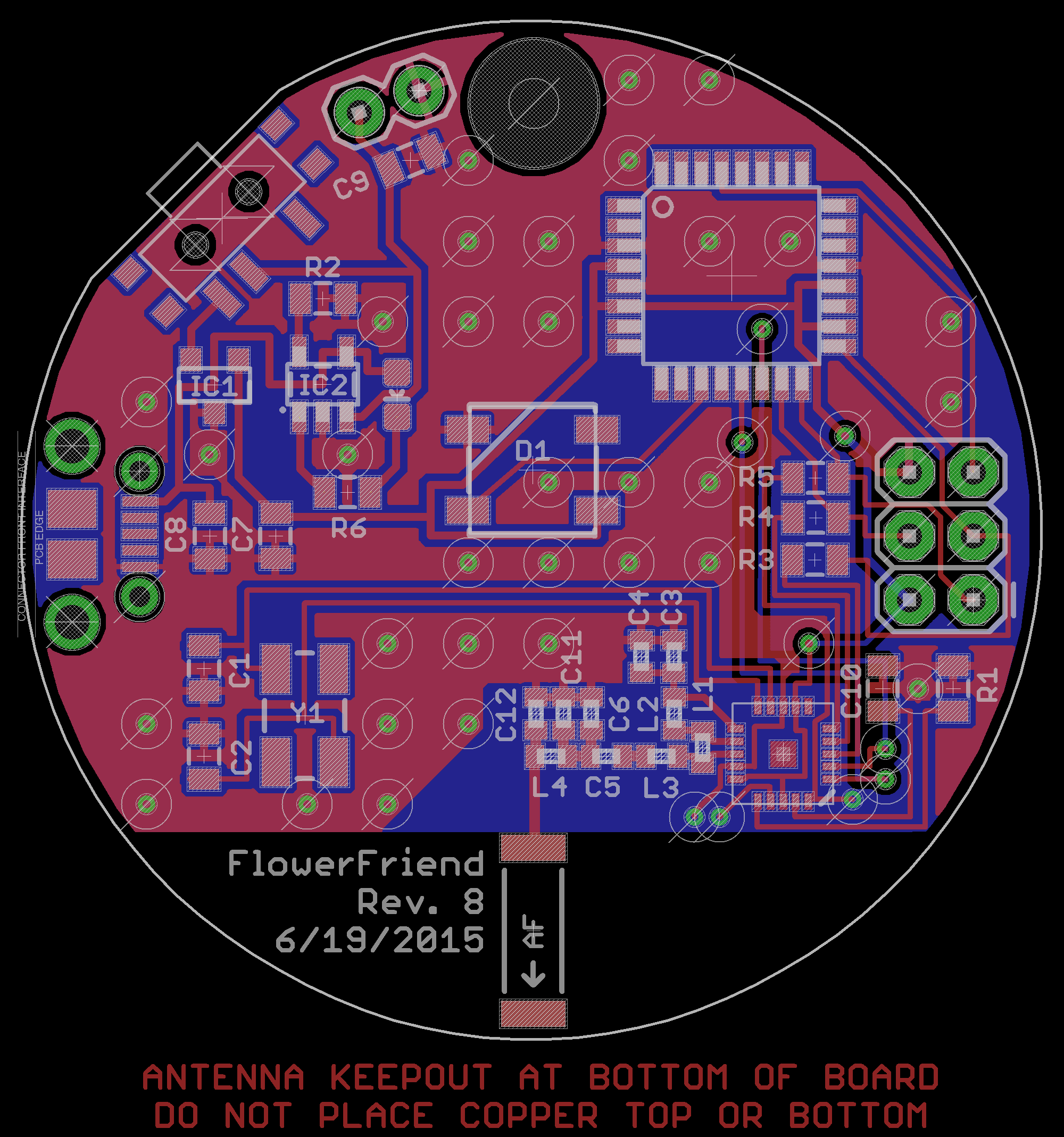
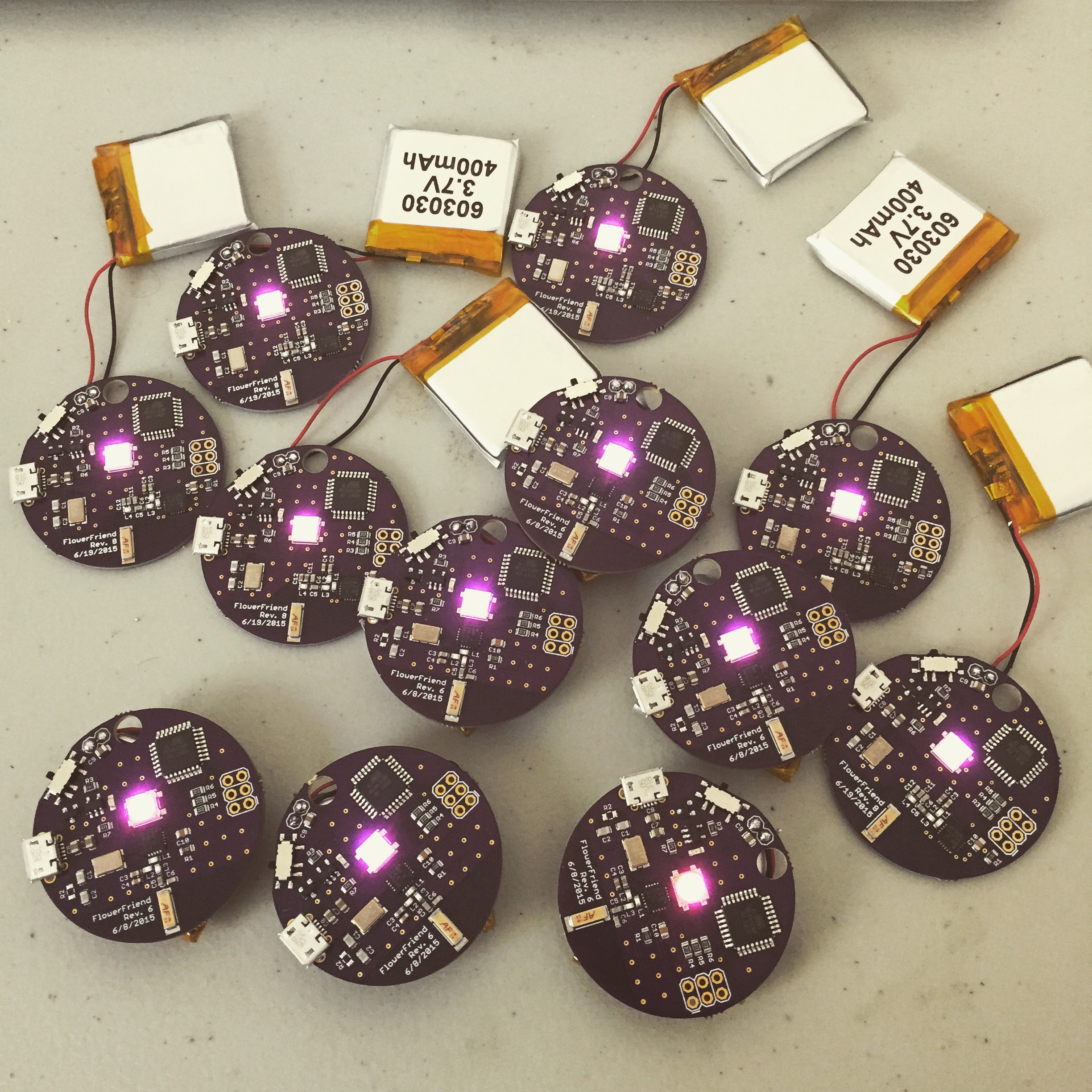
Optimizing the NRF24L01+ Matching Network
Most of the design considerations came from rolling my own RF circuit rather than using an
FCC approved module ($$). Having never designed an RF board before, it quickly became
apparent that getting it to work up to spec was going to be a challenge. Initial prototypes
worked in the range of inches rather than the 150+ feet reported with commercial modules.
After a few non-working revisions and a productive discussion with a Nordic employee, I was
able to increase range to 150 feet, at night, with line-of-sight. This was accomplished by:
1) removing the top ground plane surrounding the RF front-end, 2) increasing the number of
vias connecting the top and bottom ground planes, and most importantly, 3) adding a few
components to bring the impedance of the matching network to the 50+0j ohms expected by the
chip antenna.
To optimize the matching network, you need access to a network analyzer. This fantastic
piece of equipment simultaneously generates signals across a frequency range, pumps them
through your DUT (device under test), and measures both the magnitude AND phase of the signal
either transmitted through the DUT (two-port measurement) or reflected back toward the
input (single-port measurement). It is important that the network analyzer can determine the
phase of the signal because this allows it to calculate the complex impedance of the matching
network. If the signal at 2.45 GHz output by the NRF24L01+ reaches the chip antenna at an
impedance other than 50 ohms, some amount of the signal is reflected back through the matching
network and is lost, resulting in a severe decrease in power output, and therefore, range.
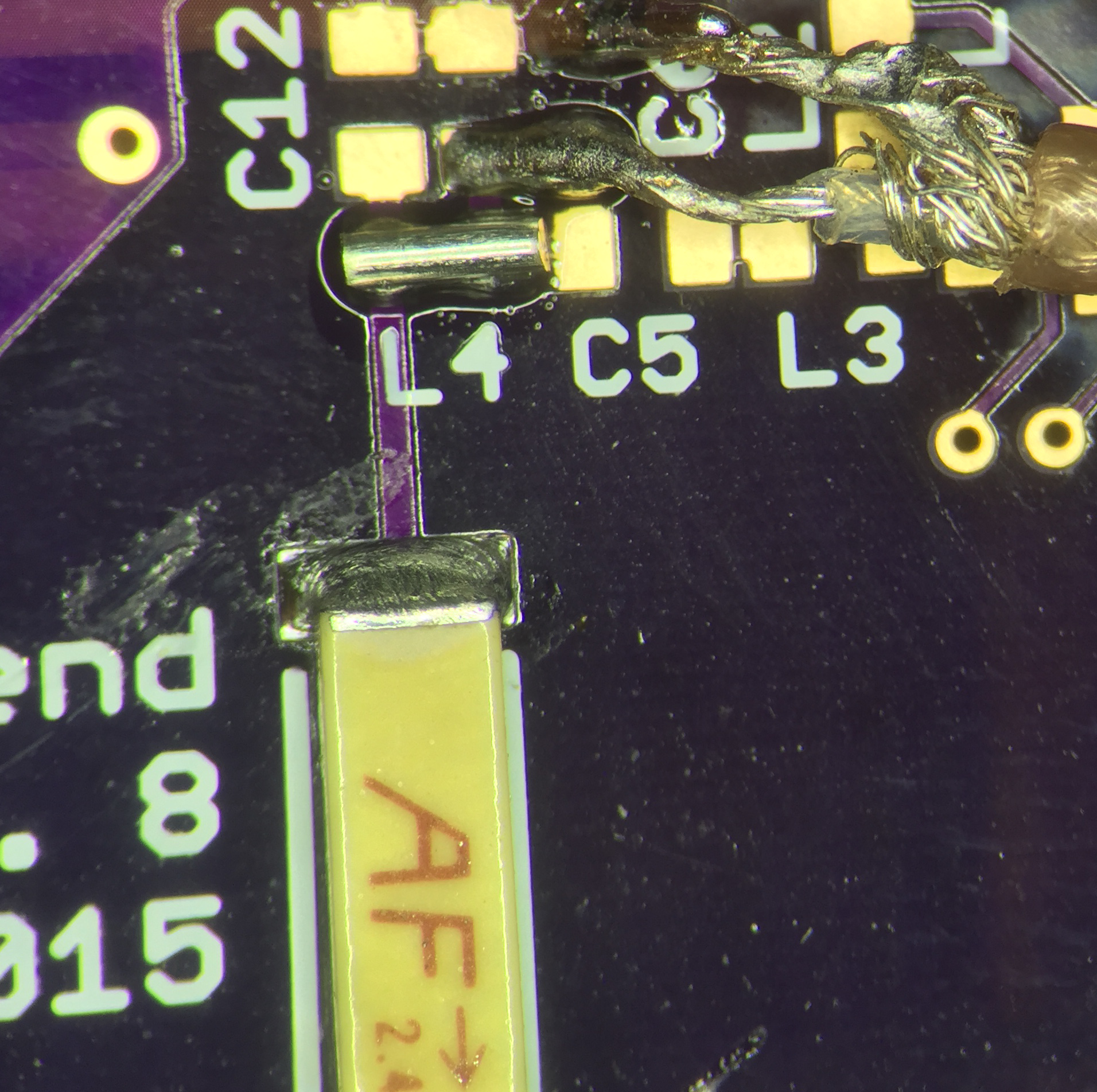
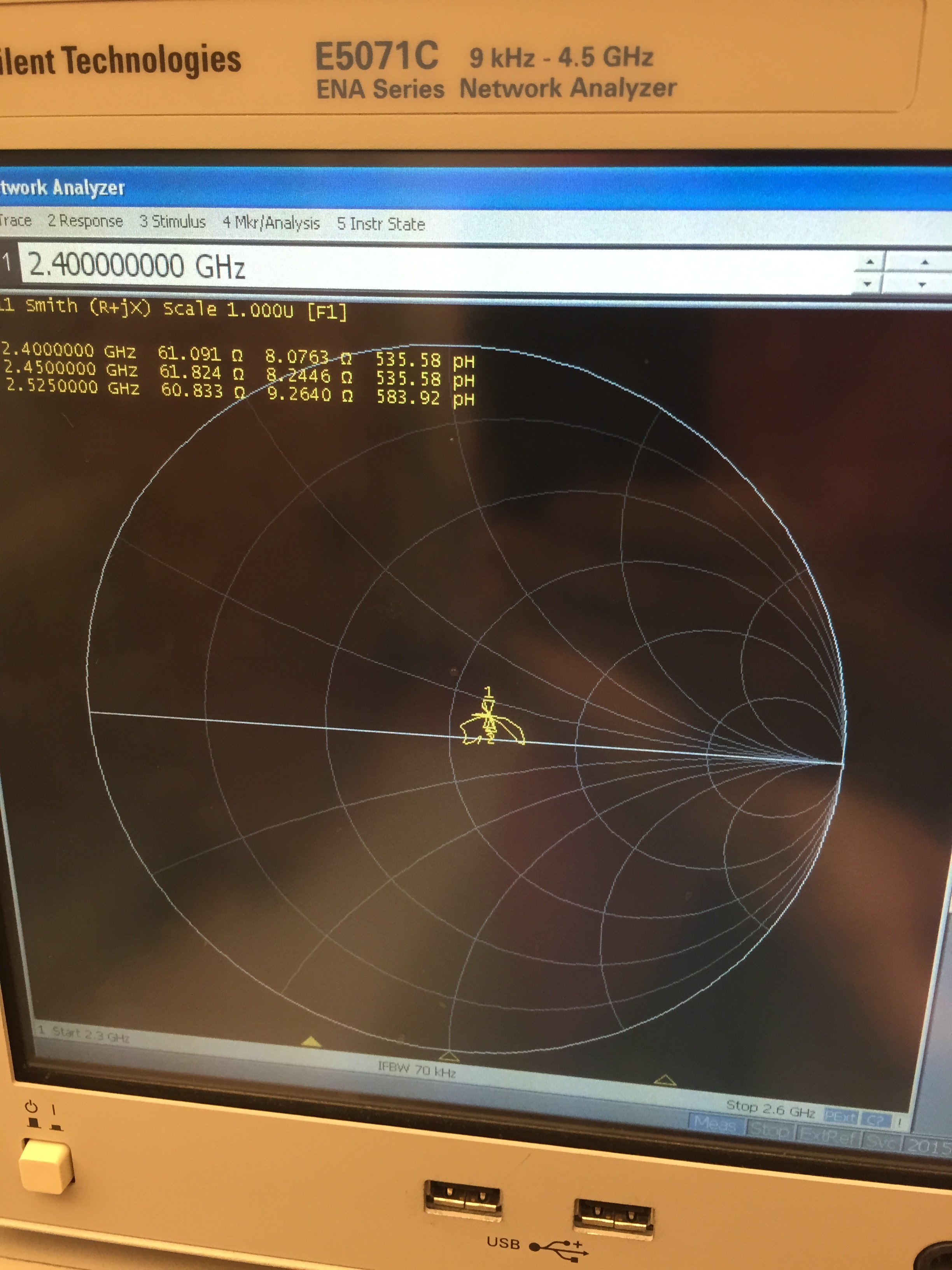
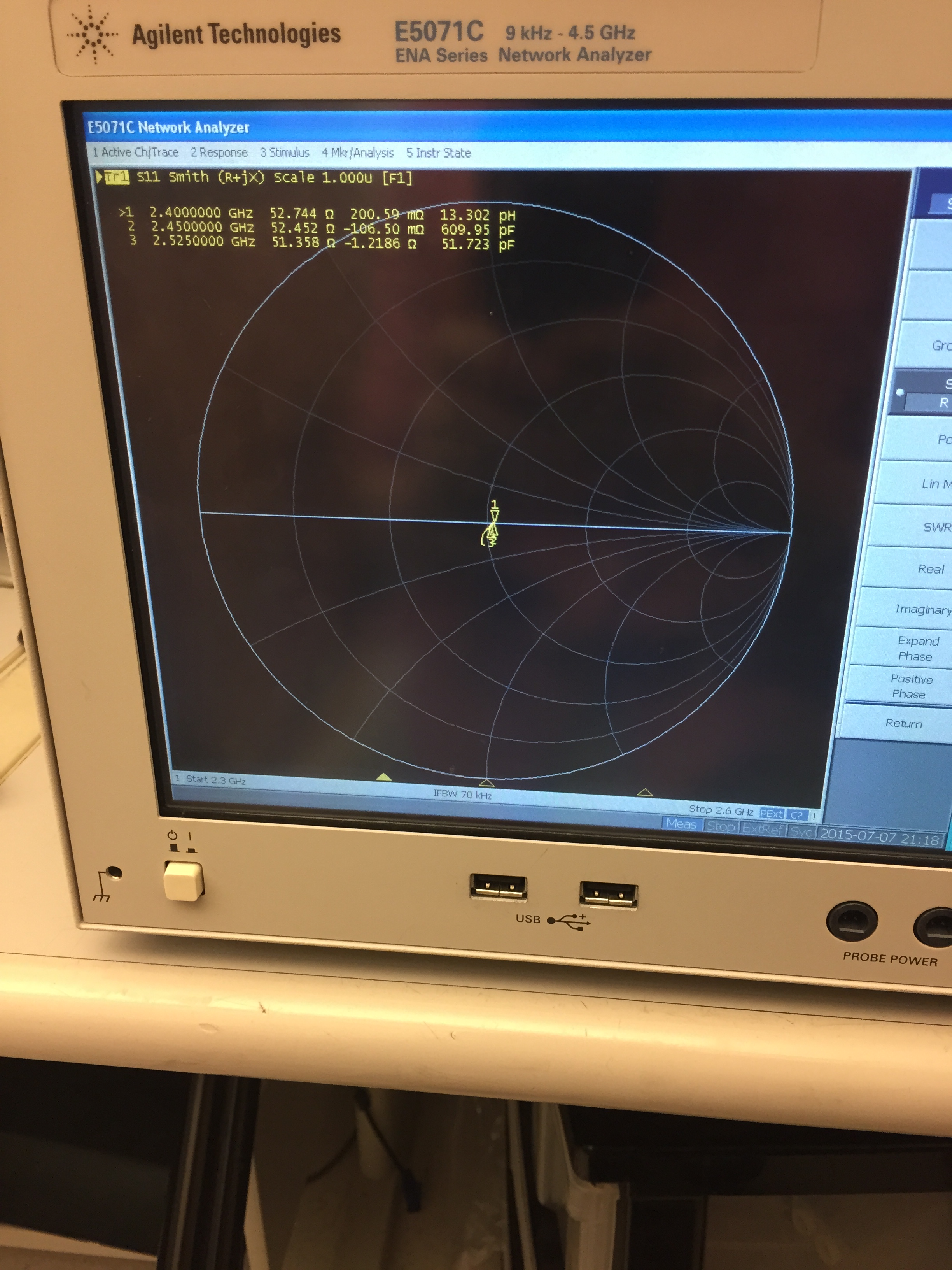
After adding a series 1.5 nH inductor and shunt 0.5 pF capacitor, the impedance was pretty much
50+0j ohms, in spec for the 2.45 GHz chip antenna I used.
Reproducibly hand-assembling tiny components
Once the design was finalized, I was faced with the daunting and tedious task of hand-assembling
100 units. Automated assembly was quoted at something like $5-10 per unit, which was just a little
too expensive.
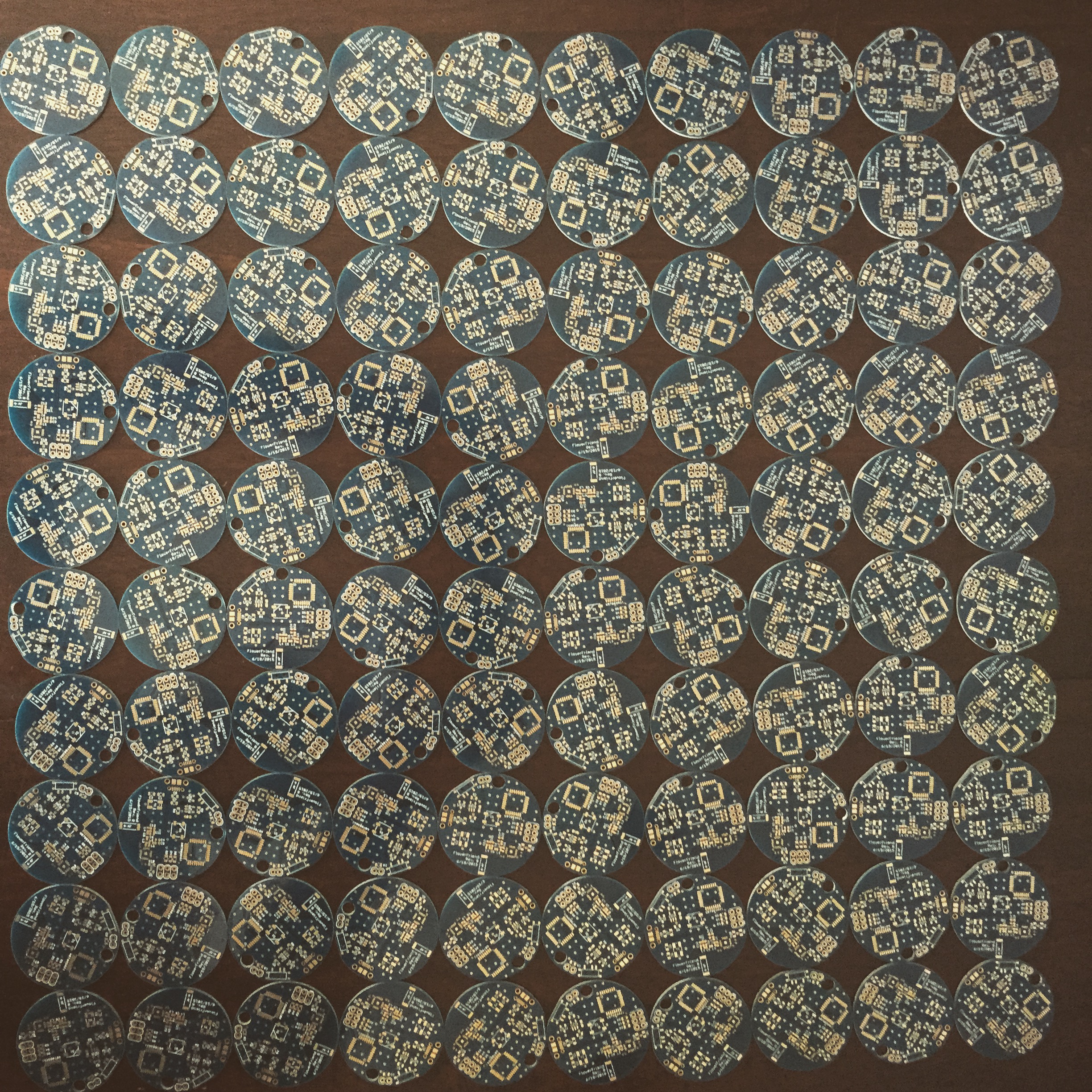
In retrospect, it would have been worth it. It's just not reasonable to place thousands of these tiny surface mount components by hand and expect to have most of the units work. I wound up tossing around 35 of them due to shorts or crappy range (less than 70 feet). That said, it is possible to do pretty well by using a real, metal stencil, a good solder paste, and being careful. Getting the right amount of solder paste on the QFN package was the tricky part: too little and some pins weren't connected, too much and there were bridges that, if fixed with an iron, often ruined the chip.
